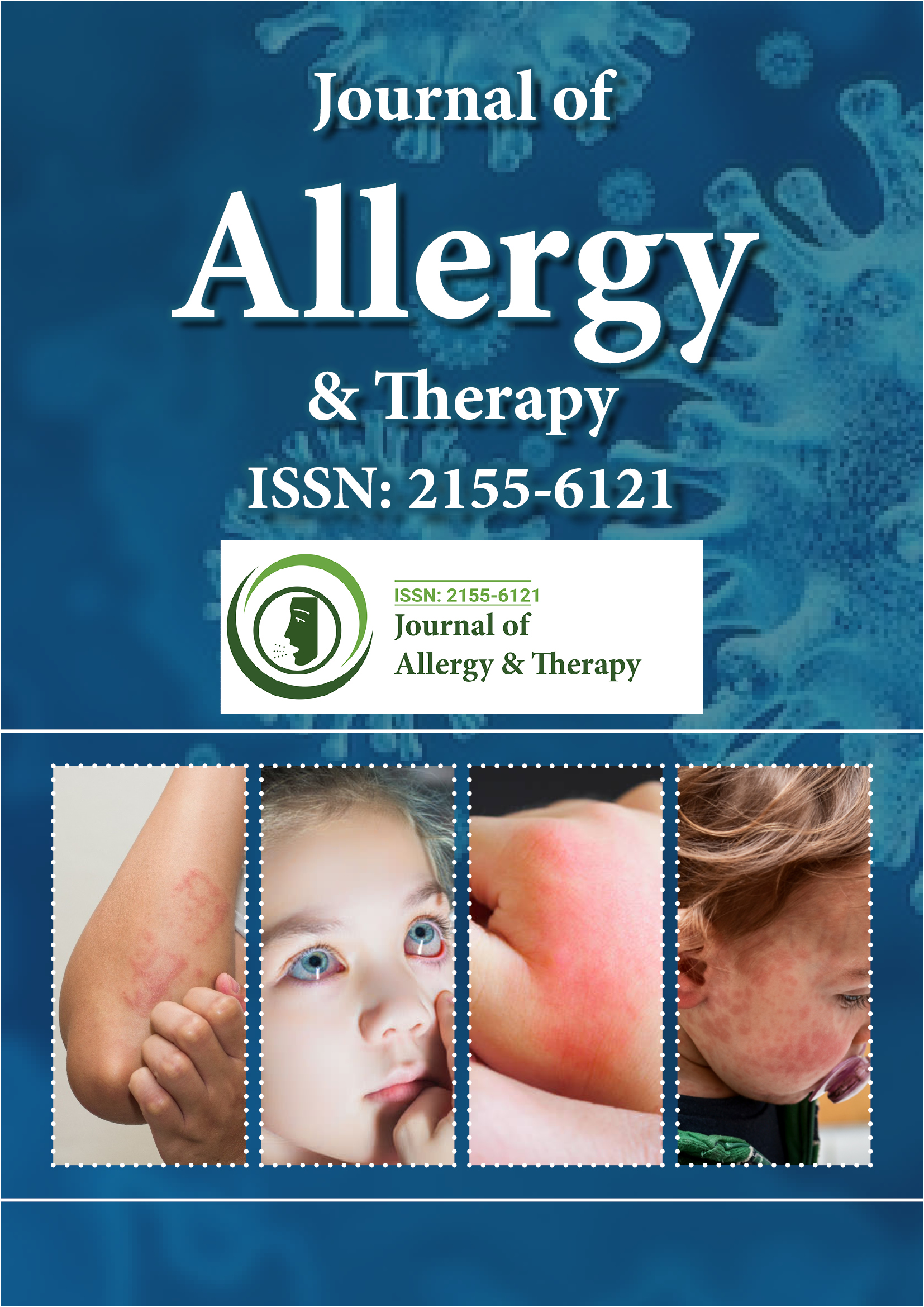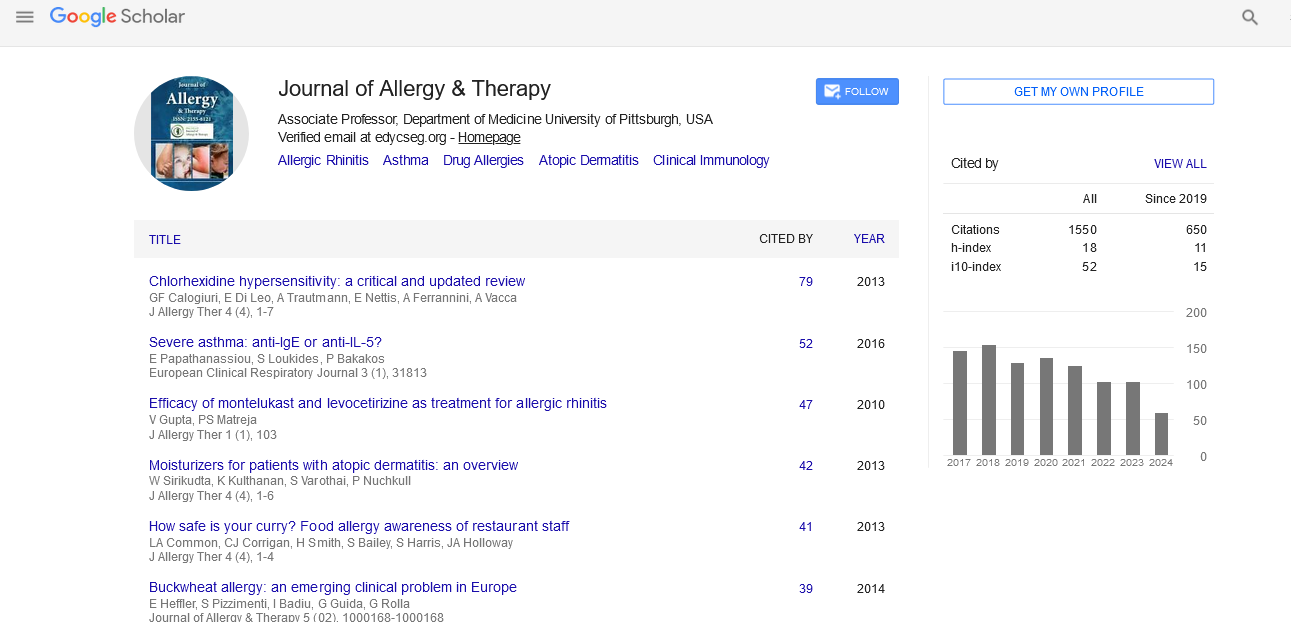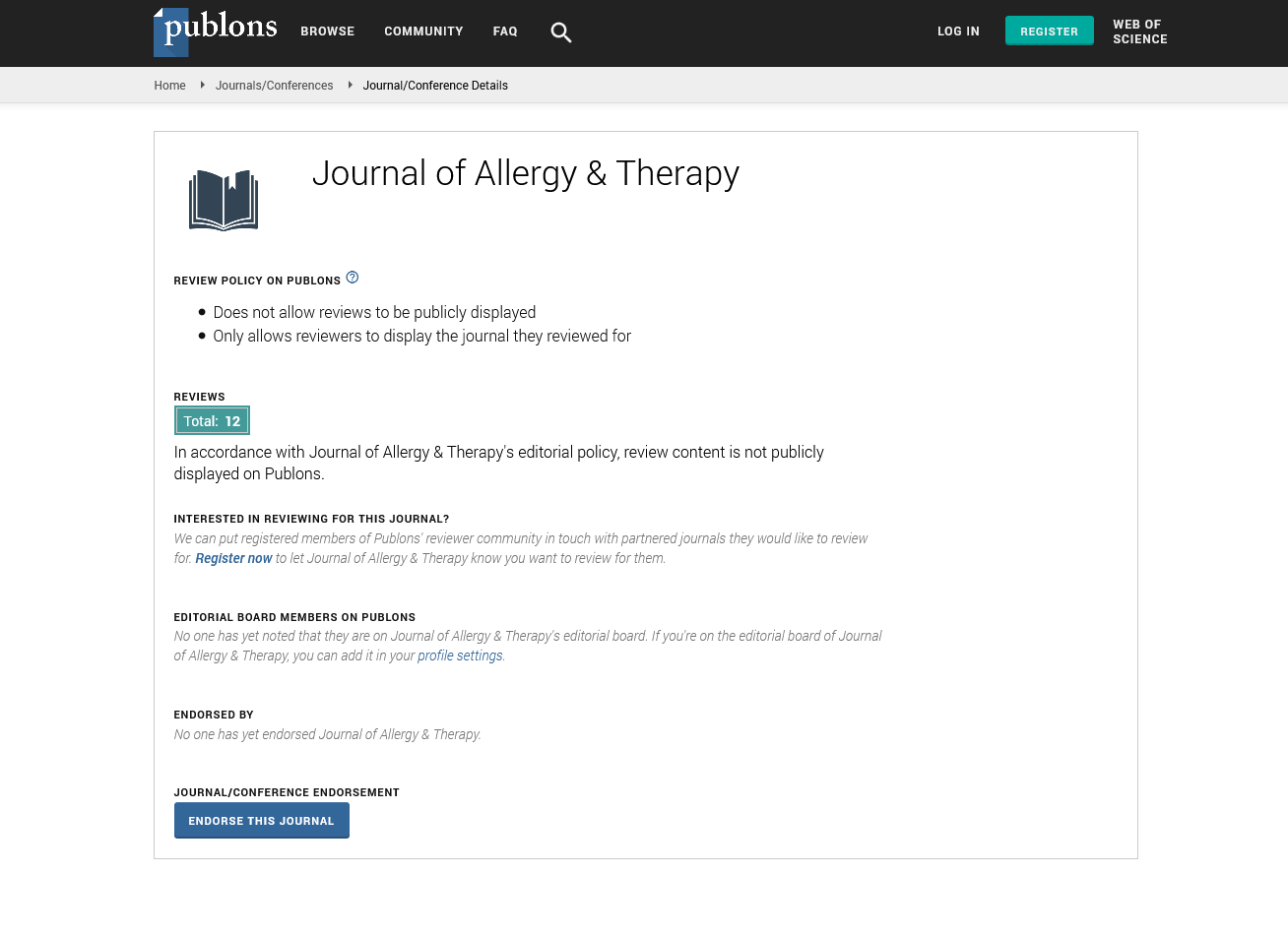Indexed In
- Academic Journals Database
- Open J Gate
- Genamics JournalSeek
- Academic Keys
- JournalTOCs
- China National Knowledge Infrastructure (CNKI)
- Ulrich's Periodicals Directory
- Electronic Journals Library
- RefSeek
- Hamdard University
- EBSCO A-Z
- OCLC- WorldCat
- SWB online catalog
- Virtual Library of Biology (vifabio)
- Publons
- Geneva Foundation for Medical Education and Research
- Euro Pub
- Google Scholar
Useful Links
Share This Page
Journal Flyer

Open Access Journals
- Agri and Aquaculture
- Biochemistry
- Bioinformatics & Systems Biology
- Business & Management
- Chemistry
- Clinical Sciences
- Engineering
- Food & Nutrition
- General Science
- Genetics & Molecular Biology
- Immunology & Microbiology
- Medical Sciences
- Neuroscience & Psychology
- Nursing & Health Care
- Pharmaceutical Sciences
Commentary - (2022) Volume 13, Issue 9
Pranayama's Impact on Persistent Bronchial Asthma
Gelbier Haan*Received: 01-Sep-2022, Manuscript No. JAT-22-18291; Editor assigned: 05-Sep-2022, Pre QC No. JAT-22-18291 (PQ); Reviewed: 19-Sep-2022, QC No. JAT-22-18291; Revised: 27-Oct-2022, Manuscript No. JAT-22-18291 (R); Published: 05-Oct-2022, DOI: 10.35248/2155-6121.22.13.303
Description
It is a common chronic condition of the airways that is complicated by the interplay of underlying inflammation, bronchial hyper responsiveness, and airflow restriction. In response to exposure to a range of stimuli, such as allergens or irritants, the major physiological process causing clinical symptoms of airway narrowing and a subsequent interference with airflow (bronchoconstriction) takes place. The IgEdependent release of mediators from mast cells, such as histamine, tryptase, leukotrienes, and prostaglandins that directly contract airway smooth muscle, causes acute bronchoconstriction brought on by allergens.
According to data from the National Health Interview Survey (NHIS), the prevalence of asthma in the United States has nearly doubled over the past 25 years, rising from 3.2 percent per 100 people in 1981 to 5.5 percent per 100 people in 1996. In the younger age groups, males tend to prevail, but the gender ratio equalises in pubertal years, and females predominate for the remainder of adult life, according to the statistics currently available. Children under the age of 18 make up one-third of people with asthma. According to a study done in 2006, the prevalence, morbidity, mortality, and economic burden of asthma have all increased significantly over the past 40 years, especially in children. Asthma affects around 300 million people globally now, and its prevalence rises by 50 percent every ten years.
Although bronchoconstriction is the initial sign of bronchial asthma, every asthma patient also experiences various degrees of airway inflammation. Even when symptoms are sporadic, airway inflammation persists, although there is no obvious correlation between the severity of asthma and the level of inflammation. All clinical manifestations of asthma appear to have a similar pattern of airway inflammation.
While acute asthma can be reversed, people with chronic asthma must take medication on a regular basis. Inhaled corticosteroids and long-acting 2-agonists are the mainstays of treatment for persistent asthma. Additional treatments with value include the use of IgE blockers, oral steroid therapy, and the delivery of Leukotriene modifiers. The majority of asthmatics still experience symptoms and have a poor quality of life after taking all these medications.
Asthma management that uses an integrated strategy is becoming more popular. Traditionally, pharmaceutical interventions have been the main emphasis of asthma care, possibly to the detriment of other management options. Breathing exercises, acupuncture, chiropractic, homoeopathy, massage therapy, qigong, relaxation techniques, mind-body therapies, and diet are some of the alternative methods discussed.
There were only seven such trials conducted, and the outcomes of these trials were not consistent, according to a recent Cochrane review of breathing exercises for asthma that chose randomized or quasi-randomized controlled trials of breathing retraining in patients of all ages with a diagnosis of asthma. Our study was conducted to determine whether pranayama and respiratory physiotherapy are helpful in the management of chronic asthma in comparison to controls and whether these techniques affect the pathophysiology of asthma, namely- atopy and inflammation, since there are few controlled studies to study the effect of breathing exercises on asthma.
Studies on breathing exercises based on respiratory physiotherapy have shown increases in quality of life and decreased usage of bronchodilators in asthma; however, its impact on pulmonary function tests remains debatable. Asthma sufferers have been advised to practice respiratory physiotherapy breathing techniques like pursed-lip breathing. Pursed-lip breathing is supposed to provide sufferers a better sense of control over their respiratory condition, which in turn aids the patients to unwind during flare-ups and lessen symptoms. However, doctors hardly ever recommend breathing exercises to their chronic asthma patients. Therefore, it is necessary to evaluate the effectiveness of respiratory physiotherapy in the general care of asthma.
Citation: Haan G (2022) Pranayama's Impact on Persistent Bronchial Asthma. J Allergy Ther. 13:303.
Copyright: © 2022 Haan G. This is an open access article distributed under the terms of the Creative Commons Attribution License, which permits unrestricted use, distribution, and reproduction in any medium, provided the original author and source are credited.


